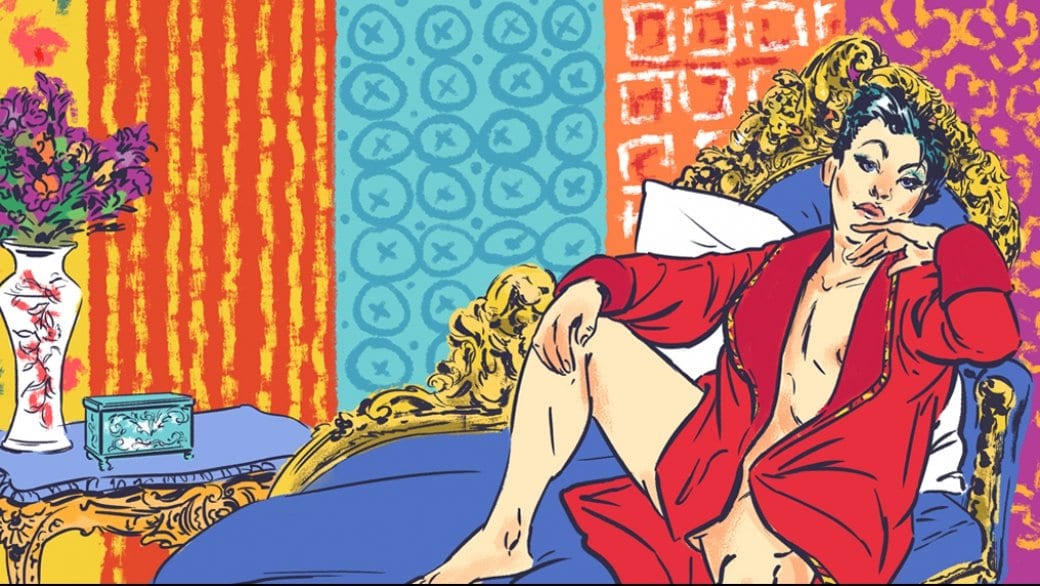Probing the depths of Trinity College’s rare books sale can yield some queer finds —in every meaning of the word. When I browsed through hundreds of dusty tomes last month, I ended up selecting a modern English translation of a turn-of-the-century French book, Le Troisième Sexe. It’s an odd book, in turns amusing and awful, conjuring up the ghosts of homosexuality past haunting the streets of Montmartre, Paris.
Le Troisième Sexe, published in 1927, is something between a personal essay, literary criticism, a treatise on “homosexuality’s scabrous banners” and a voyeuristic travelers guide for heterosexuals fascinated by the underworld of “pederasts,” “inverts,” “uranists,” “men-women” and “ephebes” of early 20th-century Paris and beyond (the author uses the terms almost interchangeably, so he’s generally not calling all homosexuals pedophiles).
The book is published under the name Willy, the nom-de-plume of Henry Gauthier-Villars, a cultural critic and author, who co-signed his name on “collaborations” with at least 50 known writers. Like previous collaborations, the translator notes that Le Troisième Sexe was written by an unknown author, with Willy interspersing the text with his own (terrible) witticisms.
The tract starts with an overview of homosexual bastions in the world, like Italy and America. Willy also refers to the particularly militant organizing homosexuals of Germany — he seems astounded that queer people could like hiking — and the foundational works of Dr Magnus Hirschfeld and his Institute of Sexual Research in Berlin.
Concerning “Asian perversions,” Willy describes a detail he finds particularly spicy on the schooling of young Chinese catamites where:
“The classroom benches are fitted with rounded pegs, of graduated sizes. The young students, who do not wear underpants under their tunics, sit, straight as arrows, on these courtly stakes. When the range of their knowledge has been sufficiently widened on bench A, they go to bench B, and so forth, up to the seventeenth bench that represents the end of their training.”
Willy irreverently notes that “if this way of seating reached our schools, wouldn’t it at least have the advantage of keeping our schoolboys a bit quieter.”
This sort of dualism of informational writing with a sneering, titillated, judgmental reflex is the essence of Le Troisième Sexe. Looking through the eyes of the author, one would think all Parisian homosexuals were excessively rouged, simpering, mincing effetes who writhed for heterosexual spectators, plying sugar daddies with cocaine and caresses.
Willy seems to be fascinated with describing the physiological root of homosexuality. The decadence, eccentricity and neuroticism of artists as a cause of inversion is a recurring theme. Quoting a magazine article on “physiopsychology,” Willy notes that, “One should not be astonished to see so many literary people in the army of homosexuals.”
The real perverts in Willy’s Paris seem to be the heterosexuals, who clamber to take in homosexual nightlife.
Crossdressing happened in the huge ballrooms and and concert halls of Salle Wagram, and Magic-City on Mardi Gras, the Sunday of mid-Lent and Bastille Day. Willy quotes another writer who describes a scene at a Montmartre nightclub called the Petit-Moulin, where society women and their dates made pilgrimage to take in the “Men-Women, the Fags of Paris.”
Emilienne, corseted in a checked jacket and fanning herself with a pink handkerchief. Otérite, whose glowing eyes were bigger than her smile. Lucienne, an adolescent, dressed in white, with black rings on her fingers and a black onyx chain around her neck! . . . Cora who, in sour tones imitating Tarjel, the popular singer, murmured refrains in which the lowest scatology vied with the most revolting pornography . . .
But not all of these places were open for the voyeuristic pleasure of heterosexuals — some had passwords, others had bouncers. Willy recounts a story about a place called the Hanneton where someone named “Big Lili” wouldn’t allow “masculine clients” beyond the door, claiming, “We are not there to amuse voyeurs!”
Willy lists some establishments that have been closed — the Maurice-Bar, the Palmyrium, the Place Blanche, the Taverne Liégeoise. Other places were only temporary meeting grounds, like the “little Fag Exchange” that occurred from dusk to dawn at the Clair De Lune. Turkish baths are another popular place for Paris’ “men-women.”
Willy also describes paints a certain picture of homosexual nightlife in Paris without acknowledging that the community was becoming just as militant as their German brothers. Historian Graham Robb notes that France saw the first stirrings of gay resistance in 1848, when prisoners of the Riom prison rioted and attacked their keepers “when a young homosexual man was separated from his boyfriend.”
“Cruising-grounds in Paris were tenaciously defended,” he continues. “In the 1840s, at the central markets, Les Halles, arrests usually began at 9 p.m. Sometimes the market porters joined in But the ‘pederasts’ would return the following evening with fresh recruits. When the wood partitions in the nearby toilets were replaced with metal sheets, they drilled new holes, and when pederasts were arrested, they showed a keen sense of their sexual rights.”
Apparently when police tried to clean up the verdant cruising-ground of the Champs-Élysées, “there was armed resistance and blood was spilled.”
Willy saw only one side of Paris’ homosexual life, and was fascinated with its spectacle, perversion and decadence. However, as homophobic a piece of writing as Le Troisième Sexe can be, I’m still glad to have it in my library next to my book on ghosts stories. It’s one more way of conjuring up the spectres of queer life in Paris’ past.
History Boys appears on Daily Xtra on the first and third Tuesday of every month. You can also follow them on Facebook.


 Why you can trust Xtra
Why you can trust Xtra


